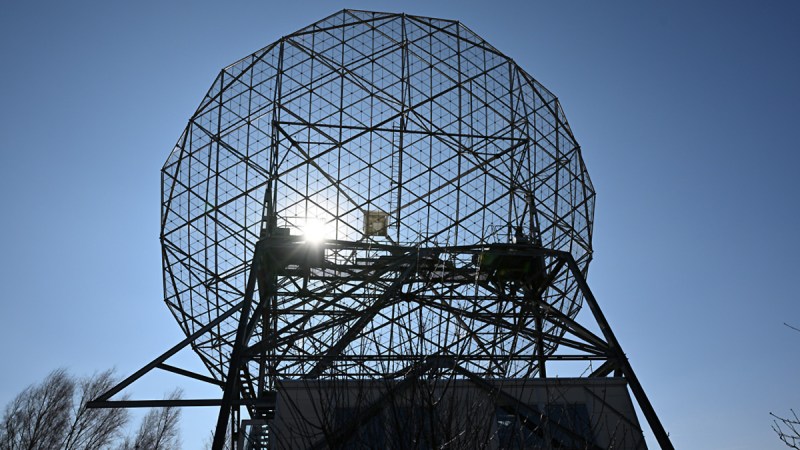Radio waves travel fast, and they can bounce, too. If you are able to operate a 25-meter dish, a transmitter, a solid software-defined radio, and an atomic clock, the answer is: yes, they can go all the way to Venus and back. On March 22, 2025, the Dwingeloo telescope in the Netherlands successfully pulled off an Earth-Venus-Earth (EVE) bounce, making them the second group of amateurs ever to do so. The full breakdown of this feat is available in their write-up here.
Bouncing signals off planets isn’t new. NASA has been at it since the 1960s – but amateur radio astronomers have far fewer toys to play with. Before Dwingeloo’s success, AMSAT-DL achieved the only known amateur EVE bounce back in 2009. This time, the Dwingeloo team transmitted a 278-second tone at 1299.5 MHz, with the round trip to Venus taking about 280 seconds. Stockert’s radio telescope in Germany also picked up the returning echo, stronger than Dwingeloo’s own, due to its more sensitive receiving setup.
Post-processing wasn’t easy either. Doppler shift corrections had to be applied, and the received signal was split into 1 Hz frequency bins. The resulting detections clocked in at 5.4 sigma for Dwingeloo alone, 8.5 sigma for Stockert’s recording, and 9.2 sigma when combining both datasets. A clear signal, loud and proud, straight from Venus’ surface.
The experiment was cut short when Dwingeloo’s transmitter started failing after four successful bounces. More complex signal modulations will have to wait for the next Venus conjunction in October 2026. Until then, you can read our previously published article on achievements of the Dwingeloo telescope.
















What about FCC and upsetting satellites?
Well it isn’t in the US, so the FCC isn’t a concern. There are loads of high power transmitters pointed skyward continuously and they aren’t cutting off every time a LEO sat wanders past. That’s what receiver selectivity is for. Even if it did matter, it isn’t exactly difficult to find a 5 minute window where your 10 degree beamwidth is free of LEOs.
“it isn’t exactly difficult to find a 5 minute window where your 10 degree beamwidth is free of LEOs.”
Starlink says hold my beer…
to hell with what starlink thinks. they chuck their satellites into the atmosphere every few months anyway
Turns out people do care what Starlink thinks, and similarly Starlink cares what people think. They are willing to work with you should their satellites be a potential threat to your operations.
But my comment was more about it being easy these days to get a 5 minute 10 degree window that isn’t obscured by some man-made satellite at some point during those 5 minutes, or, rather, lack of ease.
FCC works in just only 1 of 200+ countries of the world…
There are less that 200 countries now that Donald decided the EU is one country!
I used to work at Astron, which is the institute that operated this telescope before it was retired in favor of the radio telescope at Westerbork and Lofar. The Dwingeloo telescope is now operated by a group of volunteers, some of them after their retirement from Astron. The Dwingeloo telescope was used in the 50’s to discover part the shape of our own milky way, we now know it has a spiralled disc shape with multiple arms because of it. The science behind discovering a 3d shape with radio waves is quite interesting, given that a disc on its side optically just looks like a band of stars…
It is great to read that a group of enthousiasts pulled this new feat of with a restored museum piece which was at the time I worked there almost sold as scrap metal…
I used to work at Astron, which is the institute that operated this telescope before it was retired in favor of the radio telescope at Westerbork and Lofar. The Dwingeloo telescope is now operated by a group of volunteers, some of them after their retirement from Astron. The Dwingeloo telescope was used in the 50’s to discover part the shape of our own milky way, we now know it has a spiralled disc shape with multiple arms because of it. The science behind discovering a 3d shape with radio waves is quite interesting, given that a disc on its side optically just looks like a band of stars…
It is great to read that a group of enthousiasts pulled this new feat of with a restored museum piece which was at the time I worked there almost sold as scrap metal…
What a delightfully whimsical name for a telescope (in English, anyway).
:) It’s the name of the town where it’s located nearby. The radio telescope is located in the national park of Dwingelderveld.
-loo or -lo is a postfix in Dutch toponyms meaning oak production forest, possibly derived from the word for leather tanning because bark was used for that. A double vowel in Dutch just means a long sound or stressed syllable (in this case long). So yeah, nothing to do with English loo, which is also pronounced differently.
Quite impressive considering they didn’t modulate it with a sequence for correlation (gives extra gain). But, I see they are doing that next.
Nice. It is the base plot of a Sci-fi book I red.
Alien where using this technique to broadcast on their own planet as there was no ionosphere.
As the signal was bigger than their natural satellite, it also travel to us thru space.